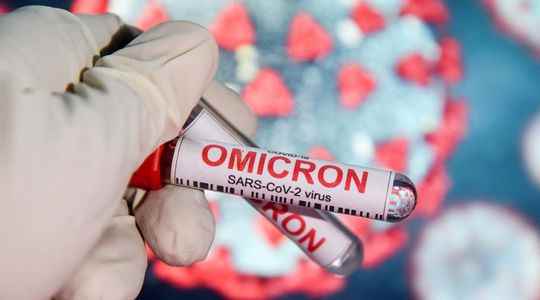It’s a sub-variant of Omicron that appeared a few weeks ago. He is now closely followed. The BA.2 strain, very close to the initial version of Omicron (BA.1), is spreading all over the world and primarily in Europe. It even dominates in Denmark, now representing 66% of SARS-CoV-2 strains, while this country, which is very active in sequencing, is subject to a very strong wave of contamination.
“What surprised us was how quickly this subvariant, which has circulated a lot in Asia, settled in Denmark,” epidemiologist Antoine Flahault told AFP. “The country was expecting a peak in contamination in mid-January; it did not occur and perhaps it is due to this sub-variant, which seems very transmissible but no more virulent” than the original variant, continues -he.
Asked about LCI, this Tuesday, Olivier Véran, mentioned the Danish example. “What the Danes tell us is that it is exactly the same variant as Omicron, with one difference that we need to explore, I have no conclusions to make at this stage, which is that “we could potentially recontaminate ourselves with BA.2 even when we would have been contaminated with the Omicron variant”, explained the Minister of Health. This “could give a competitive advantage to the BA.2 which could suddenly circulate a little more widely”, added the minister.
Sixty cases detected in France
If the health authorities wait to learn more, the traits of the “BA.2” strain are revealed. As noted The world, the sequence of its genome has been deciphered. “BA.2 carries fewer mutations than BA.1, in particular on the Spike protein”, indicates to the daily Etienne Decroly, virologist at the CNRS (Aix-Marseille University). We also know more about the site that the virus uses as the key to entering human cells. Named RBD (“receptor binding domain”), it does not present major differences on BA.2 either.
“What interests us is whether (this sub-variant) has different characteristics (from BA.1) in terms of contagiousness, immune escape or severity,” the French public health agency noted on Friday. To date, BA.2 has been detected in France, “but at very low levels”, the agency said, while the country is one of the most affected in the world by Omicron. However, it is very difficult to know at what level this sub-variant circulates in France. “The detection of SARS-CoV-2 mutations by screening does not, in most laboratories, make it possible to distinguish BA.1 from BA.2”, explains the evolutionary biology specialist at the CNRS Florence Débarre to of the world. To make this distinction, the screening targets will have to be modified. The other method consists of sequencing the entire viral genome, but “the reporting of sequencing data in France is not immediate”, adds the biologist.
Public Health France specifies that the authorities are following “closely the data which will be produced by Denmark”. “In the sequencing studies that we did on 10,000 real-life sequencing last week, it was sixty cases, but the Omicron experience showed us that 60 cases could be thousands of cases a few days or weeks longer. late”, as for him specified Olivier Véran.
“This BA.2 variant has the color, the smell, the taste of Omicron but it is not exactly Omicron”, developed the Minister of Health, referring to a “sub-lineage” of Omicron, with a mutation “on the protein which is the key to entering the human cell”. Asked about the situation in Denmark, Jean-François Delfraissy was cautious on Tuesday on France info. “If this little cousin of Omicron takes over, that means it is more transmissible, the whole question is going to be its severity,” he explained. “We look at it”, “what is its level of seriousness? I don’t know”, he admitted.
Scientists not alarmist
If the oldest genomic sequence of BA.1 dates from October 23, 2021, that of BA.2 dates from November 1, note The world. But it was not until December 7 that the corresponding sub-variant was baptized “BA.2”. Cautious, scientists do not seem alarmist. For Antoine Flahault, it is still too early to worry, even if “vigilance” is in order. “For the moment, we have the impression that it is of a severity comparable to Omicron, but many questions are still on the table”, adds the director of the Institute of Global Health at the University of Geneva. He invites to “implement screening techniques to properly detect” BA.2 and “quickly see what its properties are”.
“Very early observations from India and Denmark suggest there is no major difference in severity from BA.1,” Tom Peacock, a virologist at Imperial College London, also tweeted. According to him, the mutations observed should not call into question the effectiveness of vaccines either.
“Even with a slightly higher transmissibility” than the classic Omicron version, he absolutely does not expect a change equivalent to that which occurred when this last variant supplanted Delta. “I personally don’t think BA.2 is going to have a substantial impact on the current wave of the pandemic,” he noted. A Danish study suggests that BA.2 does not cause more hospitalizations. Other encouraging news, according to the authors of this study: “it is expected that vaccines will retain their effectiveness against severe forms linked to BA.2 infections”.
